Latest DePIN News
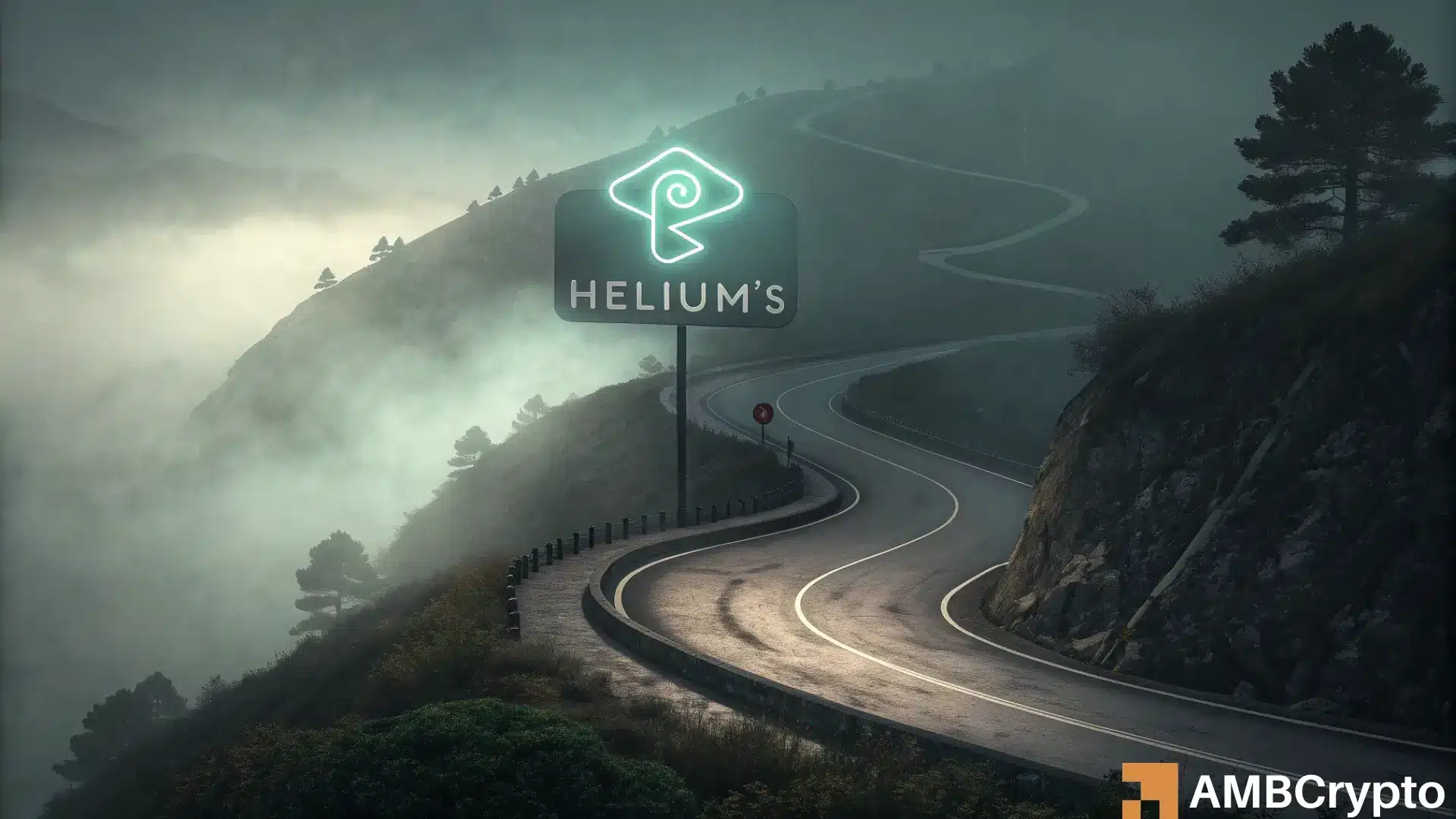
4 months ago
Helium Faces Price Challenges Amid Market Fluctuations
Helium (HNT) has been experiencing significant price fluctuations, recently needing to close above $4.24 to establish a bullish market structure. After a steep decline of 68.5% from its December resistance level of $9.54, Helium retested the psychological support level of $3 last week. This drastic drop in price over just two months indicates a challenging market environment, with the $3.3 zone now emerging as the next bearish target due to a lack of strong buying momentum and a persistent downtrend since December.
Despite a recent bounce to $4.18, Helium has yet to break its downtrend, although there are signs of weakening bearish momentum. A notable bullish divergence occurred in early February, where the price made lower lows while the Relative Strength Index (RSI) recorded higher lows. This divergence led to a bounce from the $3 support level, resulting in a 28.5% price increase within a week. However, this rally was not supported by strong buying volume, as indicated by the Accumulation/Distribution (A/D) indicator, which has been on a downtrend since mid-December.
The market has shown a large liquidity cluster around the $3.6 mark, which was tested recently, resulting in a quick price jump to $4.19. Following this spike, volatility has decreased, and HNT has consolidated below the $4 level. Traders should prepare for a potential range formation between $3.3 and $4.2-$4.5 in the coming days, with the $3.6 zone likely acting as a barrier to further bearish movements. Overall, the market remains cautious as it navigates these price levels.

4 months ago
Democratizing Quantum Computing: The Phoenix and Origin Quantum Partnership
A groundbreaking collaboration is underway between Phoenix, a leader in decentralized artificial intelligence, and Origin Quantum, a pioneer in quantum computing. This partnership aims to transform quantum computing from a complex and esoteric field into a practical tool that is accessible to everyday technologists. By integrating Origin Quantum's 72-qubit superconducting chip into Phoenix's DePIN network, the collaboration seeks to unlock powerful computational capabilities, making advanced quantum applications as easy to use as mobile apps. This integration promises to simplify the complexities of quantum systems, allowing users to harness their potential without needing specialized knowledge.
At the heart of this initiative is Origin Quantum's "Wukong" quantum computer, which boasts 198 qubits and is designed to tackle real-world challenges across various fields, including biosciences, material engineering, and artificial intelligence. The technology is already making waves in industries, providing live solutions that enhance processes from quantum biosciences to smart manufacturing optimizations. Complementing this is the upcoming launch of QuantumVM, an intuitive platform set to debut in early Q2 2025. QuantumVM will empower users to execute quantum computations through a user-friendly web interface, significantly reducing technical barriers and costs associated with quantum technology.
The implications of this partnership extend far beyond mere accessibility. As quantum computing continues to evolve, it is projected to revolutionize industries such as healthcare, finance, and logistics by optimizing complex systems and processes. Moreover, the democratization of quantum technology is crucial for fostering innovation, enabling smaller companies and independent developers to contribute to advancements in technology. This collaboration between Phoenix and Origin Quantum is not just about making quantum computing accessible; it is about reshaping the digital landscape and paving the way for a future where the impossible becomes routine.
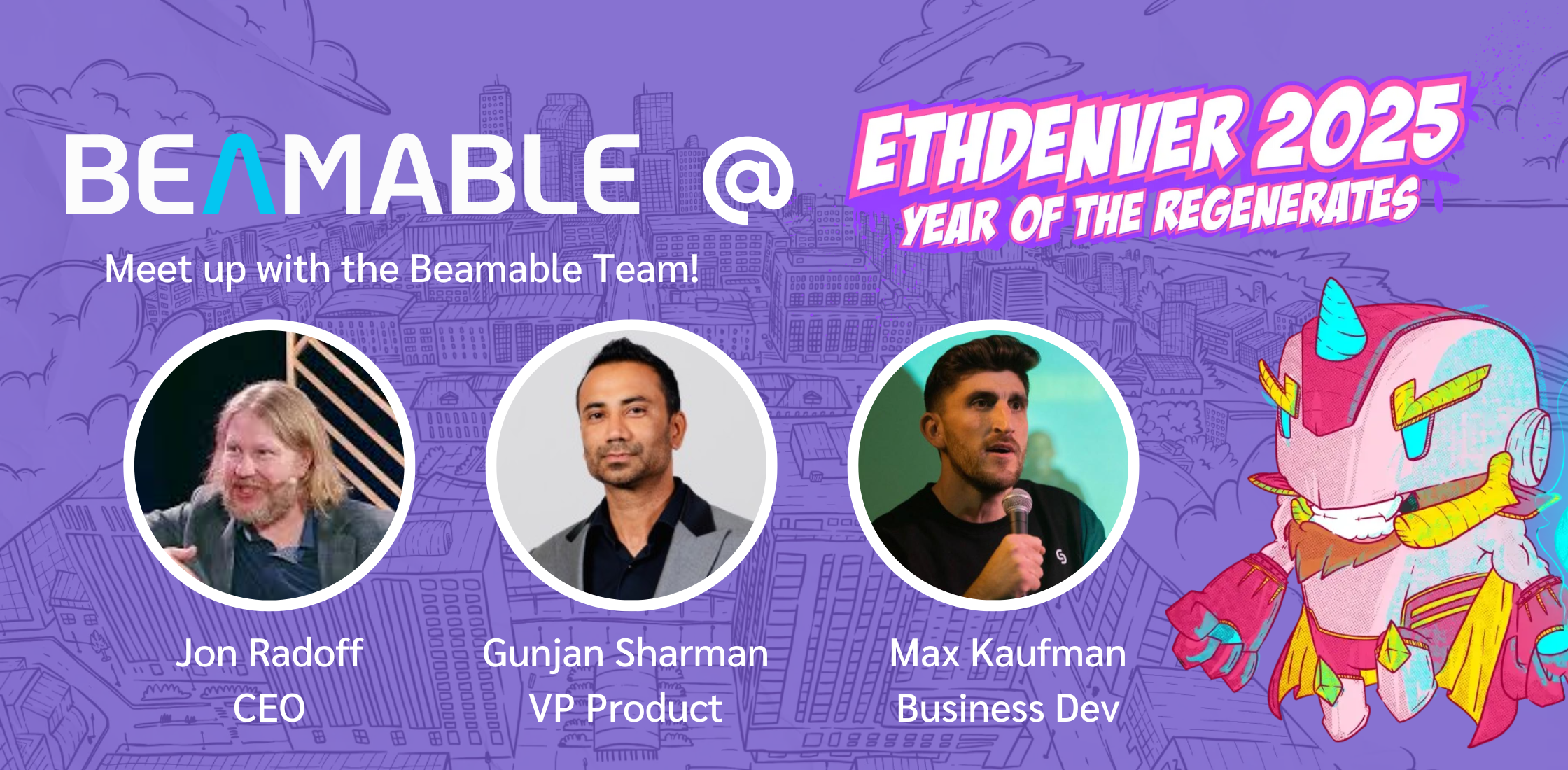
4 months ago
Beamable to Showcase Innovations at ETHDenver 2025
Beamable is gearing up for an exciting presence at ETHDenver 2025, scheduled from February 24 to March 1. The event is a premier gathering for leaders, developers, and innovators in the Web3 industry, providing a unique platform for collaboration and discussion on decentralized technologies. Beamable's CEO Jon Radoff, VP of Product Gunjan Sharman, and Business Development Representative Max Kaufman will be on-site to engage with game developers, studios, and blockchain partners, sharing insights on the upcoming Beamable Network launch, token generation event (TGE), and node sale.
A highlight of Beamable's participation will be DePIN Day, where Jon Radoff will deliver a keynote on the transformative impact of decentralized game infrastructure on the gaming industry. He will discuss how Beamable.Network is enabling developers to create scalable, resilient, and player-driven gaming experiences. This event underscores Beamable's commitment to redefining game monetization and interaction with blockchain technology, paving the way for sustainable, decentralized economies within games.
Beamable is excited to connect with various stakeholders at ETHDenver, including game studios, blockchain partners, and Web3 enthusiasts. In partnership with MomentumX Global, a reputable Web3 business development firm, Beamable aims to foster meaningful discussions and collaborations. Attendees are encouraged to reach out for meetings to explore opportunities in the evolving landscape of Web3 gaming. Beamable looks forward to contributing to the future of gaming at ETHDenver 2025 and invites everyone to join in the journey towards innovation in decentralized gaming.
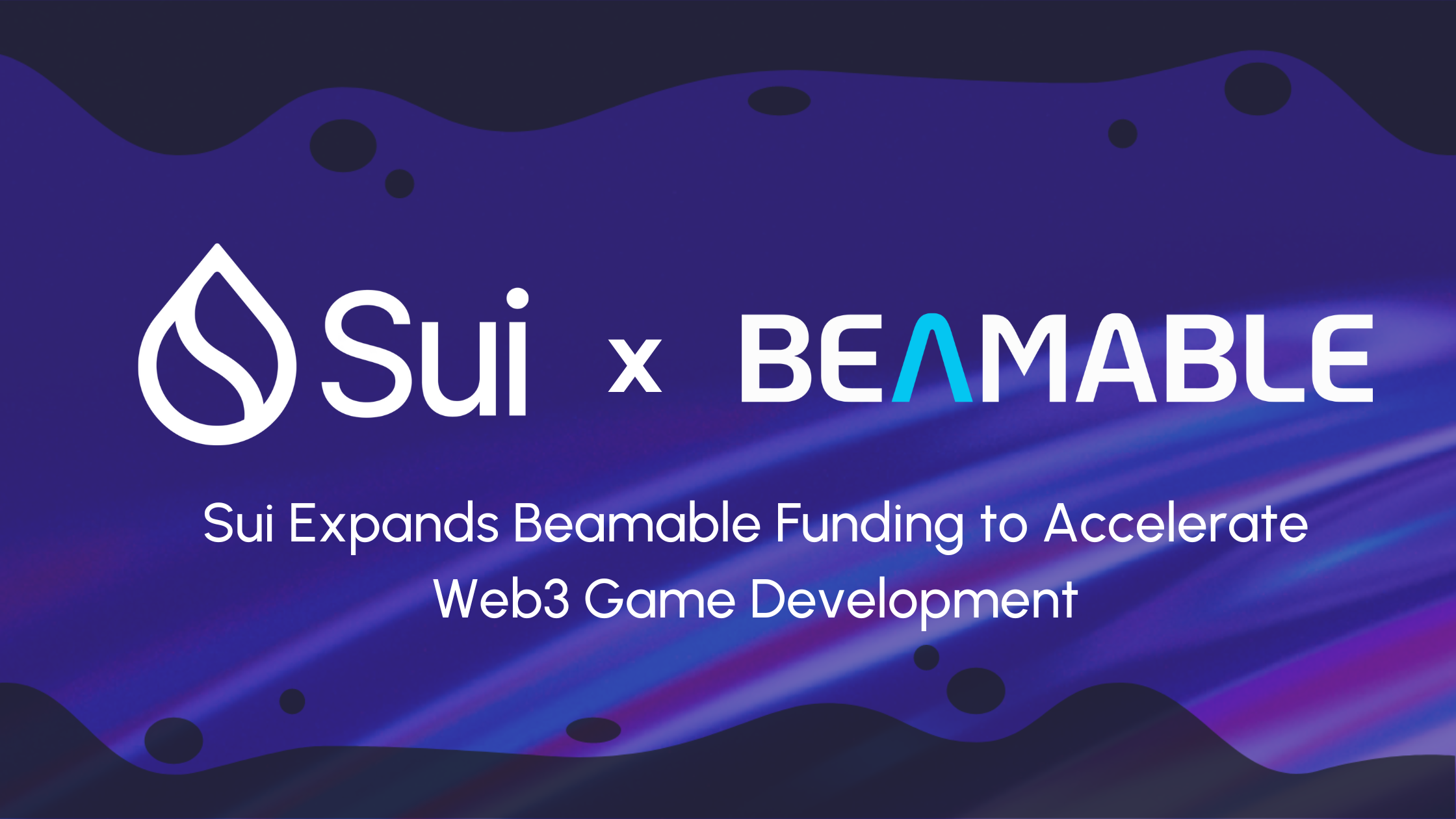
4 months ago
Beamable Expands Web3 Gaming with Sui Foundation Grant
Beamable has made significant strides in the Web3 gaming sector by securing a grant from the Sui Foundation. This partnership aims to enhance blockchain integration, making it easier for game developers to adopt Web3 technologies. The initiative promises to improve accessibility, scalability, and the overall power of gaming experiences. Key features being introduced include Stashed Wallets for seamless Web3 access, zkLogin for easy wallet creation via Google or Twitch, and Sponsored Transactions that simplify blockchain interactions by allowing sponsored transactions. Additionally, advanced NFT support and a Sui Kiosk for in-game asset trading will empower developers to create more dynamic and engaging games.
Warped Games is among the first studios to leverage these new capabilities, particularly in their upcoming Unreal Engine title, Warped Universe. Scott Brown, the President of Warped Games, expressed enthusiasm about the partnership, stating that Beamable and Sui significantly ease the development process, allowing them to focus on delivering quality experiences to players. This collaboration exemplifies how the integration of blockchain technology can enhance game development, providing tools that streamline processes and foster creativity.
As the Web3 gaming landscape evolves, developers are encouraged to explore these new features and integrate Sui-powered blockchain functionalities into their projects. The future of decentralized gaming experiences is bright, and with initiatives like this, the industry is poised for transformative growth. Game developers looking to stay ahead of the curve should consider these advancements as they embark on their next projects, marking the beginning of a new era in gaming innovation.
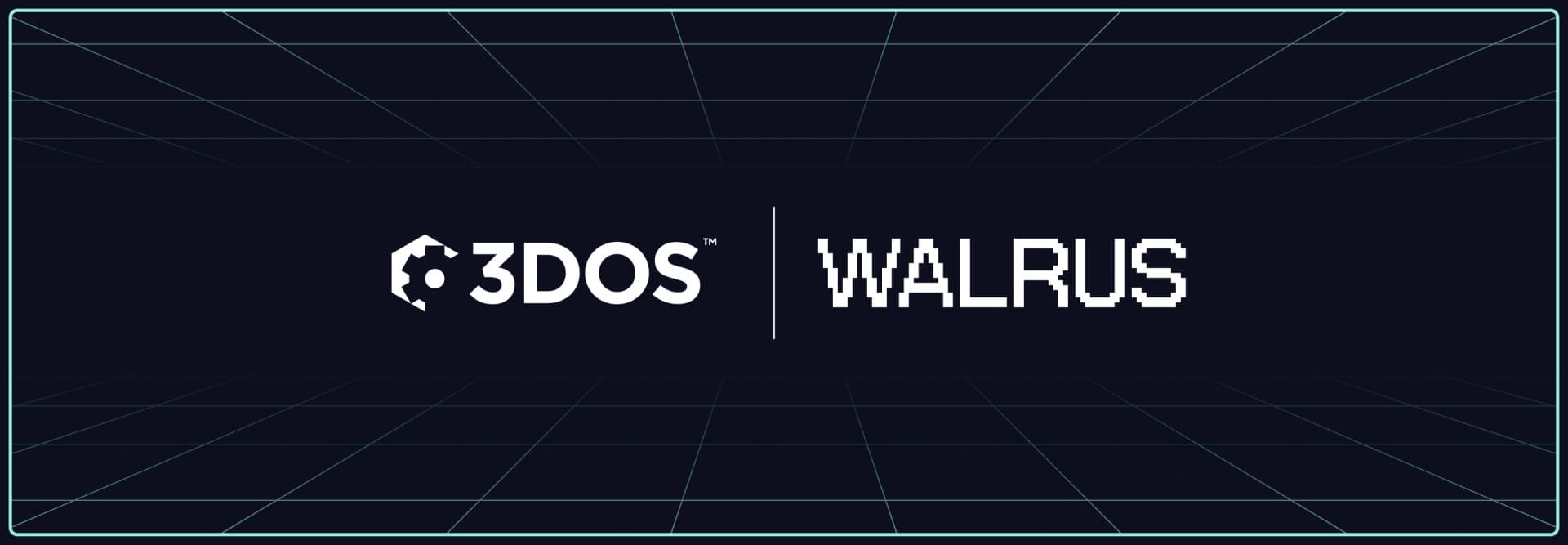
4 months ago
3DOS Partners with Walrus to Revolutionize Decentralized Manufacturing
3DOS, the pioneering decentralized manufacturing network, has recently partnered with Walrus to enhance its ecosystem of AI-driven manufacturing tools and 3D printing designs. This collaboration follows 3DOS's previous announcement regarding its foundation on the Sui blockchain. The partnership aims to decentralize and localize global manufacturing, thereby improving supply chain resilience and accessibility. By leveraging Walrus's decentralized storage solution, 3DOS is set to secure its data and provide a robust platform for its innovative manufacturing services.
In line with its mission, 3DOS is launching an AI-powered Chrome extension that will scrape and index global manufacturing capacities beyond just 3D printing. This tool will gather real-time data on various manufacturing services, including CNC machining and injection molding, allowing users to access local production options instantly. The data collected will be securely stored on Walrus’s decentralized network, ensuring it is tamper-proof and censorship-resistant. This integration of AI and decentralized storage is poised to create the largest open manufacturing index, making it easier for businesses and individuals to find local manufacturing resources.
Additionally, 3DOS allows users to upload, tokenize, and monetize their 3D printing designs as NFTs on the Sui blockchain. This feature not only protects intellectual property but also facilitates royalty payments for creators. The collaboration with Walrus enhances the integrity and accessibility of manufacturing data, ensuring global redundancy and uninterrupted access. As 3DOS continues to innovate, it aims to redefine the landscape of global manufacturing by connecting AI, decentralized storage, and tokenized designs, ultimately revolutionizing the industry.

4 months ago
Helium (HNT) Price Analysis: Will a Bullish Reversal Occur?
The Helium (HNT) token has recently experienced a notable correction in its valuation, reflecting the increased volatility in the broader cryptocurrency market. Currently, HNT has a Year-to-Date (YTD) return of -34.59%, placing it at the 94th position with a market capitalization of approximately $728.884 million. This raises questions about the token's future trajectory: will it continue its bearish trend and potentially hit a new 52-week low this month, or is a bullish reversal on the horizon? Today's analysis delves into the short-term price movements of Helium.
In the past 24 hours, the HNT price has surged by 20.98%, with a trading volume of $12.054 million, and has gained over 22% in the past week. Despite this short-term rally, the long-term outlook remains bearish, suggesting potential challenges ahead for HNT. The Relative Strength Index (RSI) indicates a sharp spike towards the neutral zone, while the average trendline provides some support, hinting at possible continued gains. Additionally, a positive crossover indicated by the Simple Moving Average (SMA) suggests a more optimistic outlook for the altcoin in the upcoming week.
Looking ahead, if bullish momentum returns, HNT could retest its resistance level at $5.155, with the potential to reach $6.525 if bullish sentiment strengthens. Conversely, if bearish forces prevail, the price may revisit its support level at $3.80, with a risk of dropping to a critical low of $2.510. Investors are keenly watching these developments, pondering the long-term price prospects of HNT as they navigate the unpredictable crypto landscape.
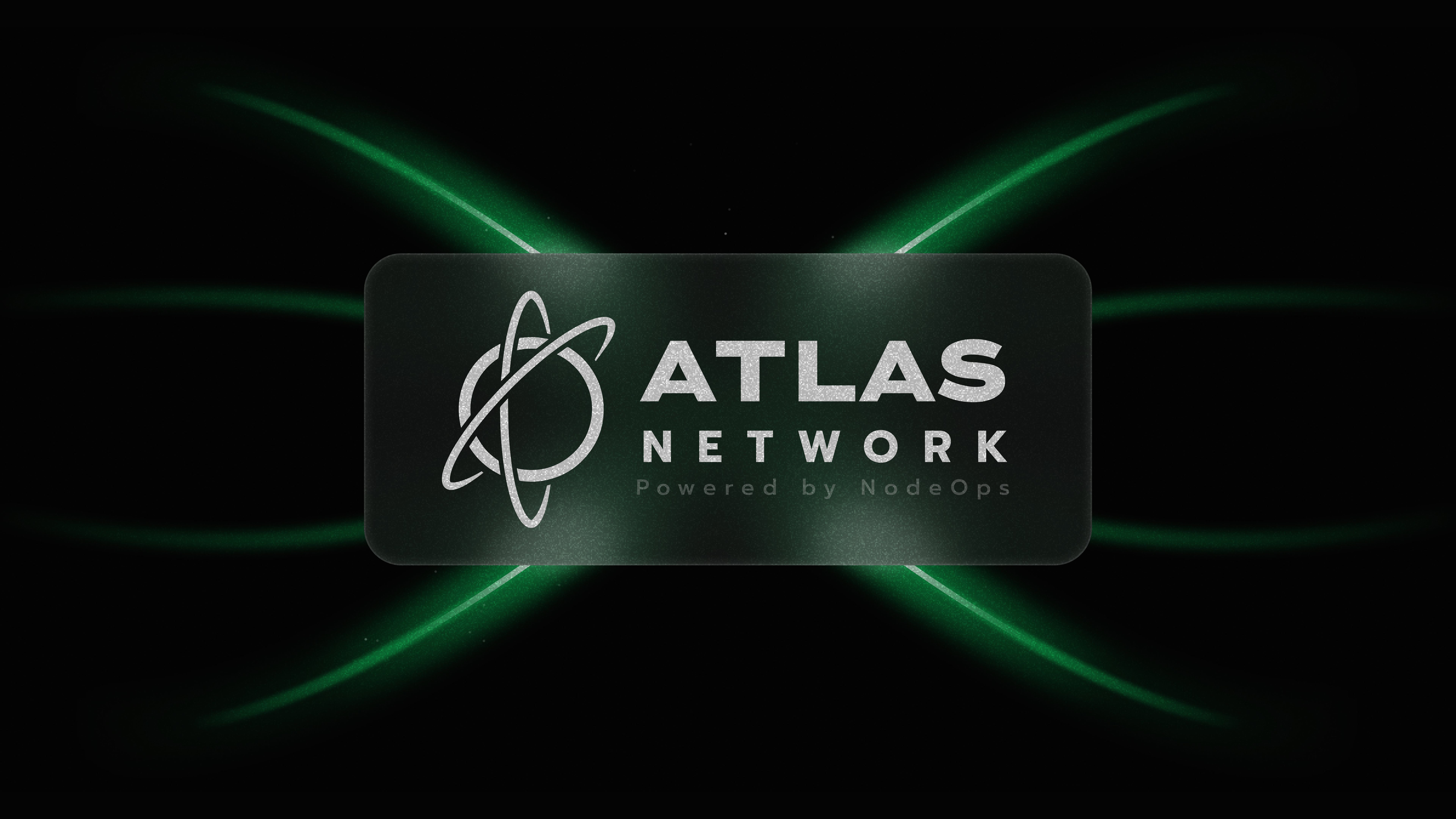
4 months ago
Incentivised Testnet
NodeOps Network, a verfiable DePIN orchestration layer for Web3 apps and protocols, invites users to participate in its Incentivized Testnet Campaign [https://coinlist.co/atlas-network-incentivized-testnet] to develop the protocol on all fronts including performance, operations, and user experience. The Incentivized Testnet features a reward pool of 20,365,012 NODE tokens, representing 3.0% of the initial token supply.
A total of 20,365,012 NODE tokens, representing 3.0% of the total token supply, have been allocated for NodeOps Network’s Incentivized Testnet participants. All users can start earning NPs (Node Points) by signing up, undertaking various tasks mentioned on the platform, deploying nodes & provide computing power, engaging with social channels, and referring NodeOps Network’s platform to other users.
In order to provide community members with further incentives, NodeOps Network has introduced staking & re-staking models to garner additional rewards passively.
Here is how users can participate in NodeOps Network’s Incentivized Testnet:
A non-custodial wallet (e.g. via Metamask) is required to connect with and engage in the campaign and to execute all the tasks mentioned. Please ensure to use the same address for all the respective tasks & activities. Visit the campaign page and connect a wallet to perform all the quests.
All the available tasks have certain NPs (Node Points) associated with them. When completed, the cumulative total will be visible to the user along with the leaderboard. NPs (Node Points) are non-transferrable Points systems designed to incentivize early testnet contributors and users.
NodeOps is a leading infrastructure marketplace for Web3, allowing anyone to purchase, deploy, and manage a wide range of blockchain nodes. NodeOps is streamlining the entire node orchestration process and offers an easy-to-use platform for Web3 protocols, developers, and retail users to manage all their operational needs.
NodeOps has a proven track record, supporting over 60+ chains, creating 38,000+ NodeFolios, deploying 55,000+ nodes, and managing assets worth $63.3 million (AUM).
NodeOps Network’s permissionless, DePIN orchestration layer is built as an AVS on EigenLayer and is setting new standards in ease, speed, and security for infrastructure management.
NodeOps Network shares the core ethos of EigenLayer. As a “verifiable SaaS,” it extends the trust provided by Ethereum stakers toward blockchains and protocols as an additional layer of economic security to node networks. With the launch of the NodeOps Network and its marketplace, it is poised for continued growth as this new ecosystem matures, unlocking exciting opportunities for users along the way.
NodeOps Network leverages EigenLayer to ensure unparalleled security, decentralization, and economic efficiency. Here’s what sets NodeOps Network apart:
- AI-Powered Efficiency: NodeWatch ensures optimal performance and minimizes downtime through real-time AI monitoring.
- Seamless Integration: NodeOps Network’s modular design supports diverse blockchain protocols, making it the perfect partner for new and established networks.
- Trustless Coordination: The orchestration layer automates provider onboarding, deployment, monitoring, and rewards, eliminating manual inefficiencies
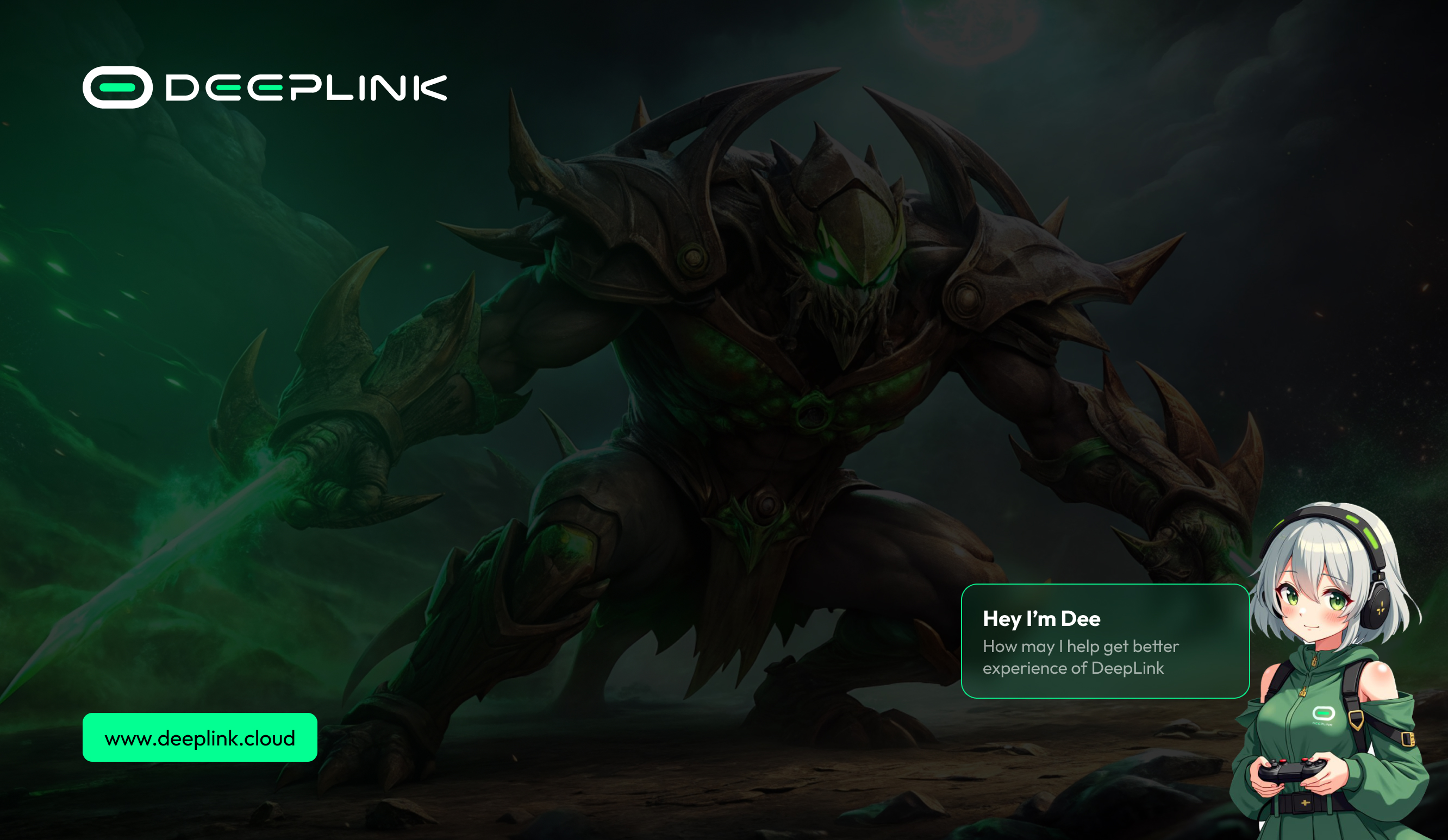
4 months ago
AI Agents, Decentralization, and GPUs, DeepLink Game-Changing Formula for Cloud Gaming Future
DeepLink Protocol is at the forefront of a major shift in the world of cloud gaming. By combining cutting-edge AI Agent technology, DePIN infrastructure, and GPU-powered solutions, DeepLink is solving critical challenges in the gaming industry and setting the stage for a new era of personalized, cost-effective, and decentralized cloud gaming. This article dives deep into the technological advancements and the groundbreaking integration of AI Agents within the DeepLink ecosystem.
Addressing Key Challenges in Cloud Gaming
The traditional cloud gaming industry has faced numerous obstacles, ranging from high infrastructure costs to limited global coverage and slow bandwidth speeds. DeepLink Protocol is stepping in to solve these problems with a robust and decentralized approach.
Global GPU Infrastructure Coverage:
One of the most significant challenges in cloud gaming is ensuring global access to high-performance GPU computing power. DeepLink solves this by leveraging blockchain technology and a token incentive mechanism to encourage miners and internet cafés worldwide to contribute their idle GPUs. Miners supply GPU power to IDC centers (Internet Data Centers) for long-term rentals, while internet cafés can provide their GPUs during idle times for short-term rentals. This decentralized infrastructure ensures that players have access to high-performance GPUs wherever they are, without the need for expensive hardware.
Cost Challenges of GPU Infrastructure:
The cost of acquiring and maintaining GPUs is another major hurdle for cloud gaming providers. Through its token-based reward system, DeepLink reduces these costs by enabling miners to accelerate their returns and distributing investment risks across a large network of contributors. Additionally, the use of idle GPUs from internet cafés or businesses further reduces the cost burden, allowing DeepLink to offer a more affordable solution for cloud gaming infrastructure.
Bandwidth Bottlenecks:
Another challenge for cloud gaming is the limited bandwidth available in many regions. DeepLink’s solution uses a token reward system to incentivize the creation of traffic nodes. Miners and service providers are encouraged to supply bandwidth to the network, which is then distributed globally via DeepLink’s decentralized infrastructure. This ensures that gamers experience smooth, uninterrupted gameplay, regardless of their location.
AI-Powered Graphics Enhancement:
DeepLink also leverages AI super-resolution technology to improve game visuals. By predicting image quality and rendering details in real-time, the platform enhances the user experience with high-definition graphics, even on lower-end hardware. This advancement allows gamers to enjoy visually stunning games without the need for high-powered machines.
Core Features - The Power of AI Agents and DePIN
DeepLink is transforming cloud gaming by combining several powerful technologies in its ecosystem. At the heart of this transformation is the integration of AI Agent and DePIN (Decentralized Physical Infrastructure Networks). These technologies enable DeepLink to deliver a more intelligent, efficient, and scalable cloud gaming experience.
Decentralized Architecture Powered by DePIN:
DeepLink Protocol is built on a blockchain-powered decentralized ecosystem that ensures transparency, security, and scalability. The platform utilizes DePIN, a system that aggregates idle computing resources from across the globe, transforming them into a high-performance network capable of supporting cloud gaming at scale. This decentralized approach not only reduces infrastructure costs but also empowers users to participate in the ecosystem by contributing their idle GPUs and other computing resources.
AI Agent-Powered Smart Gaming Experience:
At the core of DeepLink gaming revolution is the introduction of AI Agent (Dee)—intelligent virtual assistant that enhance the gaming experience by providing real-time support and automation.
• Real-Time Interaction: AI Agent will be designed to recognize the user’s gaming interface and provide on-the-fly guidance, offering strategic recommendations, tips, and game-related advice. This enables players to enhance their gameplay without needing to learn complex mechanics on their own.
• Automated Game Control: Over time, the AI Agent evolve in sophistication. Starting with basic tasks like resource collection and task guidance, then progress to intermediate tasks such as combat strategy optimization and complex task execution. In the most advanced stages, AI Agent can handle global planning and high-difficulty game scenarios, helping players navigate even the toughest challenges.
• Voice Command Support: DeepLink AI Agent can be controlled via voice commands, making it easier for players to interact with the system. This feature lowers the learning curve and simplifies game mechanics, making the experience more accessible to casual gamers.
Cloud Gaming and Multi-Scenario Applications
DeepLink Protocol's innovative approach extends far beyond traditional gaming. The platform is designed to support a wide range of gaming scenarios, from casual play to professional esports and immersive virtual environments.
• Cloud Esports:
In competitive gaming, AI Agents provide valuable assistance by offering intelligent strategies and real-time performance enhancements. Whether it's optimizing in-game decisions or providing tactical advice, the DeepLink AI Agent enhance the player’s ability to perform at the highest level, making cloud esports more accessible and competitive.
• Cloud Internet Cafés:
Another application of DeepLink technology is the support for cloud internet cafés. By allowing players to access high-performance gaming resources through idle GPU rentals, the platform enables a cost-effective gaming solution for players in regions where hardware is scarce or expensive. This opens up cloud gaming to a broader audience, particularly in developing countries.
• Immersive VR/AR Experiences:
DeepLink AI Agent also extends to VR (Virtual Reality), AR (Augmented Reality), and XR (Extended Reality) environments, enhancing the immersion and interaction within these next-generation gaming experiences. By providing real-time guidance and interaction in these environments, the AI Agent aims to create a truly immersive gaming world.
• Decentralized Gaming Economy:
DeepLink also integrates blockchain technology to create a decentralized gaming economy. With the help of AI Agents, in-game assets can be tokenized and traded, allowing players to monetize their achievements and items in a secure, transparent manner. This opens up new possibilities for players to earn, trade, and invest in virtual economies.
Ultra-Low Latency and Rendering Optimization
DeepLink Protocol combination of AI and GPU technologies results in ultra-low latency and optimized game rendering. This ensures a smoother, more responsive gaming experience, which is essential for high-speed competitive gaming and immersive gameplay. By reducing latency and improving rendering times, DeepLink provides an enhanced user experience that is second to none in the cloud gaming space.
The Future of Cloud Gaming
DeepLink Protocol represents the future of cloud gaming, an ecosystem powered by AI Agent, DePIN, GPU infrastructure, and blockchain technology. The integration of these technologies addresses some of the most pressing challenges in the industry, from high infrastructure costs and limited GPU coverage to slow bandwidth and suboptimal game visuals.
By harnessing the power of decentralized computing, AI, and blockchain, DeepLink is paving the way for a more intelligent, efficient, and globally accessible cloud gaming platform. Whether you’re a gamer, developer, or miner, DeepLink offers unparalleled opportunities to participate in the evolution of gaming.
Stay tuned as DeepLink continues to drive innovation and reshape the future of cloud gaming.

4 months ago
Weaver Labs Updates Roadmap for Adeno Token in 2025
In the rapidly evolving telecommunications sector, innovation often faces significant hurdles. Despite the potential of blockchain technology to revolutionize network infrastructure, many decentralized projects, such as Helium and XNET, have had to pivot from ambitious plans involving 5G deployment to more traditional solutions like Wi-Fi. These shifts highlight the industry's resistance to change and the challenges of integrating new technologies into existing frameworks. As companies like Nova Labs' Helium network adapt to user experience and implementation difficulties, the need for a pragmatic approach becomes clear, especially for startups like Weaver Labs, which is focused on creating an open marketplace for telecom infrastructure through its Adeno Token.
Weaver Labs recognizes the slow pace of change within the telecom industry, particularly regarding shared infrastructure and open networks. The company's updated roadmap for 2025 emphasizes practical steps that align with current market realities while maintaining a long-term vision. Unlike many DePIN projects that struggle with product-market fit, Adeno aims to empower existing telecom networks rather than disrupt them. By integrating with current infrastructure through its Network-as-a-Service (NaaS) model, Adeno seeks to create a sustainable ecosystem where token use is driven by real-world demand rather than speculation.
Looking ahead, Weaver Labs plans to list the Adeno Token on centralized exchanges in 2025, focusing on private telecommunications networks and testing new use cases that leverage blockchain technology. Collaborations with partners like Streamr and Liquid aim to enhance data transmission and infrastructure sharing, particularly in underserved regions. By prioritizing partnerships and practical applications, Weaver Labs is positioning itself to navigate the complexities of the telecom landscape while fostering a community that supports the future of decentralized telecommunications.

4 months ago
FXGuys: A Rising Star in the DeFi Landscape
The cryptocurrency market is witnessing a surge in innovation, with FXGuys emerging as a notable contender among high-potential altcoins and DeFi projects. Unlike established players like Filecoin and Hedera, FXGuys combines staking opportunities with a unique prop trading funding program. This innovative approach not only attracts investors but also creates a robust ecosystem for traders, making it a promising alternative in the rapidly evolving crypto landscape.
FXGuys stands out with its unparalleled staking rewards, allowing users to stake $FXG tokens and earn a 20% profit and revenue share from broker trading volumes. This feature positions FXGuys as one of the best DeFi tokens, offering passive income opportunities for its holders. Additionally, the revolutionary Trade2Earn program incentivizes traders by rewarding them with $FXG tokens for every trade executed, fostering increased trading activity and volume. With over $3.9 million raised in its Stage 3 presale, the $FXG token is currently priced at $0.05, reflecting strong investor interest and potential for growth.
What sets FXGuys apart from its competitors is its commitment to accessibility and convenience for traders. The platform supports multiple trading platforms, including MT5 and cTrader, and offers same-day deposits and withdrawals in over 100 local currencies. Furthermore, FXGuys eliminates barriers such as buy/sell taxes on $FXG and KYC requirements for decentralized trading, making it an attractive option for both seasoned traders and newcomers. As FXGuys continues to gain traction, its unique offerings position it as a leading player in the DeFi space, poised for significant growth in the coming months.
Signup for latest DePIN news and updates